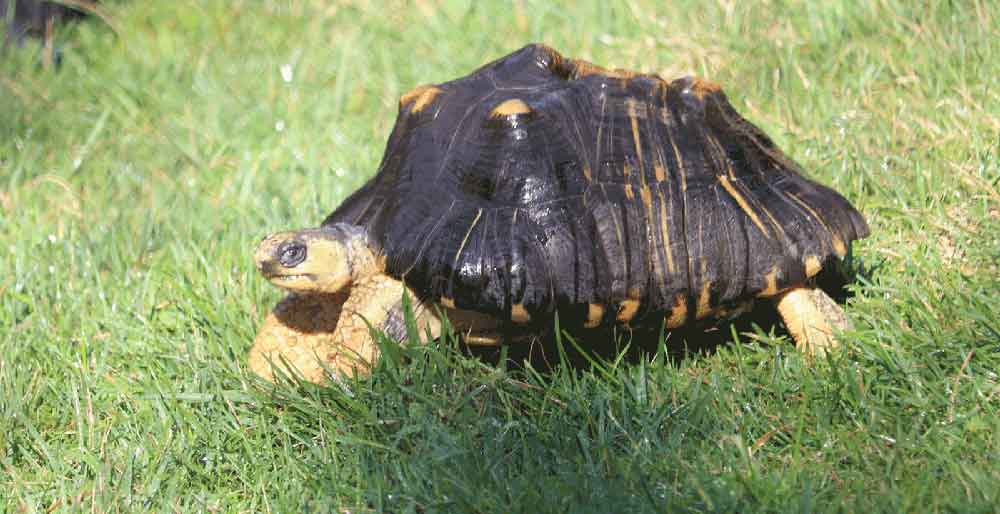Radiated Tortoise
ASTROCHELYS RADIATA

HABITAT
Dry brush, thorny forests, and woodlands
GEOGRAPHIC REGION & RANGE
Only found in the South and southwestern areas of Madagascar.
DIET
Grasses, leaves, fruits, flowers, and succulents.
PHYSICAL DESCRIPTION
The head, legs, and tail are yellow, with a black patch on top of the head and around the eyes. Juveniles are lighter in color. The shell is highly domed and is marked with yellow lines from the center of each dark plate.
LIEFESPAN
Usually up to 60 years. Rarely, they can live much longer. The oldest known was thought to have lived to be 188.
THREATS
The radiated tortoise population has been declining so quickly that population models predict extinction in around 40 years. This decline is due to habitat loss and over harvesting. Thousands of radiated tortoises are illegally taken from the wild each year to be sold globally as both pets and as food. Madagascar is an extremely impoverished country with many humanitarian issues which make wildlife conservation a challenge unless these issues are also addressed.
STATUS
Critically Endangered
FUN FACTS
Like many turtles, the sex of their young is determined by the temperature of the eggs during incubation. Cool temperatures produce males, while warmer temperatures (around 87 degrees F) produce females.
Tortoises can feel when you touch their shell, as the shell contains nerves and blood vessels.
The oldest radiated tortoise, Tu’i Malila, was said to be 188 when she died.
Young radiated tortoises are lighter in color than the bright yellow adults.
The word for radiated tortoise in Malagasy, a language spoken in Madagascar, is sokatra.
What are AZA Zoos doing for Radiated Tortoises?
Their zoo population is managed through conservation breeding programs called Species Survival Plan programs, which ensures genetic diversity and species health. As of 2018, there were over 330 individuals at 60+ AZA-accredited facilities.
AZA zoos fund and participate in field research focusing on the ecology of radiated tortoises in Madagascar, and outreach efforts focusing on raising awareness, anti-poaching measures, and the reintroduction of tortoises raised in human care.
